January 9, 2017
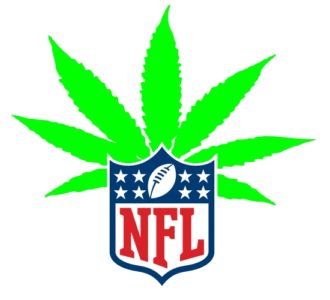
Mile High Potential: NFL Veterans Tackle America’s Opioid Crisis
Professional football has long since surpassed baseball as America’s most popular sport. The NFL’s Super Bowl is a national party. Super Bowls represent 19 of America’s 20 most-watched TV broadcasts.
115 million people tuned in for 2015’s thrilling New England Patriots-Seattle Seahawks contest. By contrast, only 40 million watch the historic deciding game of last year’s World Series when the hapless Chicago Cubs defeated the Cleveland Indians for their first championship since 1908 (any team can have a bad century).
NFL football is high-octane competition characterized by strategy, grace, speed, willpower and brutal violence. To perform at peak levels, pro athletes must study and practice intensely while building and maintaining their finely-tuned bodies.
To stay on the field, most players also manage chronic pain by relying on opioid-based pain killers, anti-inflammatories and other drugs prescribed by team physicians. Going further, many players risk fines and suspensions by consuming banned drugs to enhance performance and/or manage pain. These including Adderall, anabolic steroids and marijuana.
The NFL strictly monitors and punishes the use of banned drugs. Repeat offenders receive incrementally severe suspensions. Getting caught derails careers.
Penalizing the use of performance enhancing drugs (PEDs) makes sense. It literally levels the playing field. By contrast, the NFL penalizes marijuana use by players for legal and political reasons, not to maintain competitive balance.
The NFL’s anti-marijuana stances has become problematic. Former players argue that marijuana helped them avoid prescription opioids by managing their chronic pain, inflammation and neurological disorders.
The NFL’s over-reliance on opioid pain killers and its prohibition against medical marijuana mirrors mainstream medical opinion. American society is moving past the medical establishment and the NFL. It’s time for more enlightened thinking.
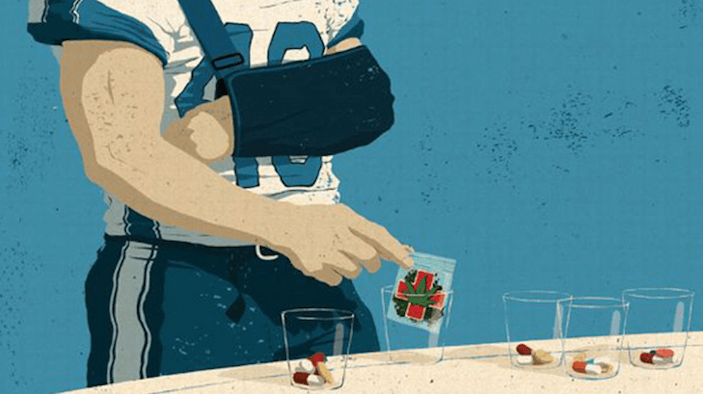
Playing on Drugs
Eugene Monroe was a gifted offensive lineman for the Jacksonville Jaguars and Baltimore Ravens. Monroe trained intensely, ate well and avoided drugs. His hard work paid off. Monroe was the 8th overall pick in the 2009 NFL draft.
Professional football is a physically-demanding, injury-prone occupation. Team doctors prescribed Monroe opioids (OxyContin and Vicodin), anti-inflammatories (Toradol and Celebrex), sleep aids (Ambien) and other drugs to treat his pain and prime him for competition.
As the wear-and-tear accumulated, Monroe was in constant pain and took multiple drugs to avoid losing playing time,
I was given pills before practice and training, and before, during, and after games. It was beginning to affect my body, my gastro-intestinal system and my personality.
Monroe blacked-out driving home from a game as opioids kicked in. He saw former players suffer and sometimes die from opioid addiction. He wanted opioids out of his life. Monroe began experimenting quietly with cannabis as a pain relief substitute. Its healing properties amazed him.
In a March 9, 2016 CNN interview, Monroe became the first active player to publicly question the NFL’s reliance on prescription opioids and its anti-cannabis policy. He challenged the NFL to study the efficacy of medical marijuana. Monroe’s team, the Baltimore Ravens, released him last June and he subsequently retired.
Monroe has become an outspoken advocate for radical changes to the NFL’s policies on marijuana use. He personally funds medical marijuana research and invests in early-stage medical marijuana companies.
In retirement, Monroe still trains intensely but relies on medical marijuana to manage his pain and joint inflammation. “Now, I don’t take any pharmaceuticals at all,” he says.
Like Monroe, other former NFL players are expressing their concerns regarding prescription opioids and their positive experiences with medical marijuana. Monroe’s Jacksonville teammate, Eben Britton, received heavy doses of opioids from team physicians to treat his injuries and chronic pain.
Britton believes in holistic medicine and has a strong aversion to pharmaceuticals,
I didn’t like the side-effects of opioids,” Britton says. “They made me feel crazy and irritable. They drove up my heart rate and made it difficult for me to sleep. So, I gravitated to cannabis. It relieved my physical pain and stress and helped me sleep and even lessened the anxiety of being on injured reserve and away from the team.
As a player, the stigma and consequences of getting caught made Britton anxious. In retirement, he trumpets the benefits of medicinal marijuana,
I love the game and I recognize that pain is part of it. If the NFL is concerned about players getting high [on marijuana], the reality is they’re already high on opioids. The League has the opportunity to be innovators in sports medicine and to have a positive impact on players’ health by looking more closely at medical marijuana.
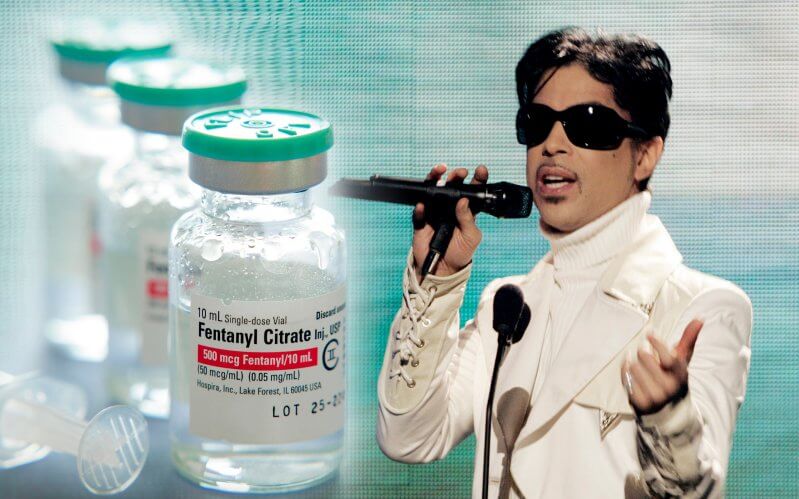
America’s New Addiction
Opioid addiction has become an American healthcare crisis. The sudden death of superstar musician Prince last April gave a face to opioid addiction. Prince’s life was remarkable; his death was not.
Playing all his own instruments, Prince beguiled fans for almost 40 years and had 13 top-ten songs. His unique musicology combined soul, funk, gospel and rock genres. Still going strong at age 57, Prince succumbed to an overdose of Fentanyl, an opioid commonly prescribed for chronic pain relief.
According to the U.S. Surgeon General, 78 people die from similar opioid overdoses every day.[1] Between 2004 and 2014, an estimated 250,000 Americans died from opioid overdose, making opioids the number one preventable cause of death in America. Deaths from Fentanyl doubled in 2015.[2]
Despite this all-too common tragedy, opioids are mainstream American medicine. Pharmaceutical companies develop and market opioids. The U.S. Food and Drug Administration approves and regulates them. Physicians prescribe opioids abundantly to football players, military veterans, cancer patients and others suffering from chronic pain.
Opioids are a synthetic derivative of heroin. They are highly addictive and easily subject to abuse. Fentanyl, the drug that killed Prince, is up to 50 times more powerful than heroin.[3] Cerfentanil is 100 times more potent than Fentanyl and 10,000 times stronger than morphine.[4]
Between 2007 and 2012, West Virginia physicians prescribed 780 million hydrocodone and oxycodone pills even as 1,728 people fatally overdosed.[5] Excessive prescribing creates surplus opioids for resale. Addicts buy opioids on the Black Market or switch to heroin because it is cheaper.
This cycle of use, abuse and addiction has devastating consequences. Nearly 4,000 people become addicted to opioids every day. Almost 1,000 of those opioid addicts or 23% develop a heroin addiction.[6]
Opioids are non-discriminatory in devastating lives and communities. Addicts come from all societal ranks – rich, middle class and poor. They inflate healthcare costs, increase criminal activity and over-burden social services.
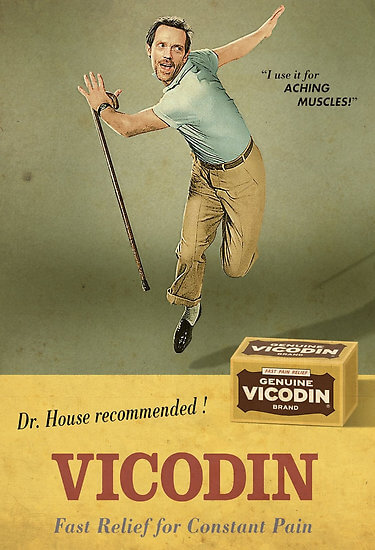
Villains and Victims
Until OxyContin came to market in 1996, doctors prescribed opioids in limited fashion to manage severe pain associated with serious injury or illnesses. OxyContin is a formulation of oxycodone developed by Perdue Pharma, a privately-held pharmaceutical company based in Stamford, CT.
OxyContin offered longer-lasting pain relief – up to 12 hours per pill. Prior to Oxy, patients took pain pills, such as Percocet, every 4 to 6 hours. Marketed by Perdue as a miracle drug, patients and physicians hopped on board the Oxy Express. Today, OxyContin is America’s best-selling pain-killer. Perdue Pharma has earned $32 billion in total revenue from the drug to date.
Until 2001, drug companies and the U.S. government asserted that opioids physicians were not addictive. In the 15 years since, however, over-prescribing has become a growing and endemic problem. The mounting death toll from opioid overdose (see chart below) displays the horrific results.[7] In 2015 alone, over 33,000 people died from overdosing on opioids.[8]
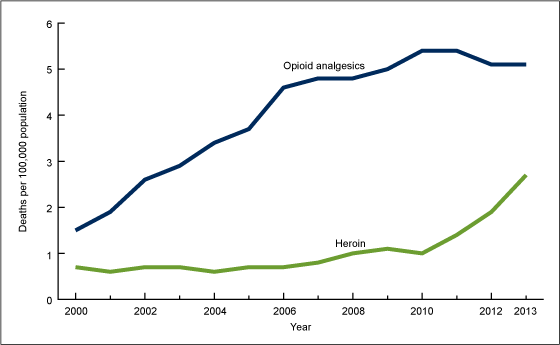
Each year, doctors prescribe the equivalent of one bottle of opioids per for every American[9] Patients with temporary post-surgical pain typically receive 30-pill prescriptions when 3 or 4 would suffice. Deadly addictive opioids fill nation’s medicine cabinets. These drugs are difficult to track and control. Most opioid addicts get their first pills from relatives and friends.
Despite marketing claims, OxyContin’s pain relief does not last 12 hours. Pain returns earlier than expected. Patients crave relief.[10] By continually dosing, many deplete their supply prematurely. They ask physicians for more drugs until refused. They hide their addition, seek drugs elsewhere and feel ashamed.
In a 2016 report, the U.S. Surgeon General stressed that substance abuse and addiction are symptoms of chronic illness:
For far too long, too many in our country have viewed addiction as a moral failing. This unfortunate stigma has created an added burden of shame that has made people with substance use disorders less likely to come forward and seek help.
It has also made it more challenging to marshal the necessary investments in prevention and treatment. We must help everyone see that addiction is not a character flaw – it is a chronic illness that we must approach with the same skill and compassion with which we approach heart disease, diabetes, and cancer.[11]
In 2007, Perdue Pharma pled guilty to criminal charges that it misled doctors, regulators and patients about OxyContin’s potential for abuse. The company paid $600 million in fines and legal fees. Perdue’s President, Medical Director and top lawyer pled guilty to related fraud charges and paid a $34.5 million fine.[12]
Perdue is not alone in conducting questionable and/or illegal opioid marketing. The FBI arrested Insys Therapeutics executives in December 2015 for bribing doctors and defrauding insurance companies to increase Fentanyl sales.[13]
Despite mounting evidence of opioid’s destructive properties, pharmaceutical companies market opioids aggressively and avoid discussion of their drugs’ additive properties. As Steve Jobs observed, “It’s time to think different.”
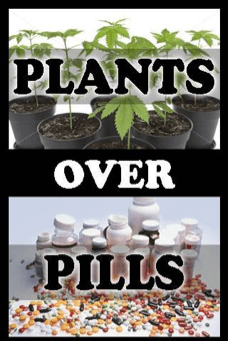
A Promising Natural Alternative
Unlike opioids, medical marijuana is a well-tolerated natural compound that does not cause death if over-consumed. For over 5,000 years, human beings have used marijuana for its medicinal properties. There is little evidence that users ever become addicted.
Marijuana influences the body’s cannabinoid receptors concentrated in the brain, nervous system and organs. These receptors comprise the endocannabinoid system which maintains homeostasis or balance throughout the body’s nervous, respiratory, circulatory and endocrine systems.
Marijuana’s impact on the body is holistic, not targeted. Scientists believe marijuana’s holistic properties make it effective in treating a broad range of medical conditions, including chronic pain, nausea and seizures.[14] [15] [16] Marijuana also may help reduce inflammation and alleviate the progression of chronic traumatic encephalopathy (CTE) associated with multiple concussions.
It is telling that professional football players turn to marijuana as an alternative to opioids. Buffalo Bill’s offensive tackle Seantrel Henderson suffers from Crohn’s Disease. Henderson has had 24 inches of his intestines removed and cannot ingest opioids without severe gastro-intestinal pain. He risks suspension when he uses medical marijuana to relieve chronic pain.[17]
States that have legalized medical marijuana have experienced sharp declines in commercial and Medicare Part D opioid prescriptions. The reduction in Medicare Part D spending is particularly noteworthy since patients must pay for medical marijuana out-of-pocket – strong anecdotal evidence that medicinal marijuana works.[18]
According to the Journal of the American Medical Association (JAMA), chronic pain patients who used marijuana reduced their use of opioids by 64%. Medical marijuana saved Medicare $165 million in 2013. If available nation-wide, it would have reduced Medicare Part D expenditures by $470 million.[19] This constitutes more evidence that medicinal marijuana is both safe and cost-effective.
The Federal government categorizes marijuana as a Schedule 1 narcotic with “no medical benefit.” This equates marijuana with heroin and LSD. The government’s stance on marijuana is anachronistic, a vestige of the nation’s 90-year “War on Drugs.”
During the just-completed 2016 elections, 8 more states legalized medical marijuana. It is now legal or decriminalized in 25 states and Washington D.C. Although the medical establishment has been slow to embrace medical marijuana, the American people are on board. 90% of Americans support legalizing medical marijuana.[20]
The Schedule 1 drug categorization stigmatizes medical marijuana. Physicians cannot “prescribe” medical marijuana, they can only recommend its use. Insurance companies cannot approve and pay for marijuana. Researchers cannot conduct clinical effectiveness studies. If classified as a Schedule II narcotic, like OxyContin, the FDA could evaluate medical marijuana for targeted use.
The Federal government’s continued resistance to investigating medical marijuana’s therapeutic properties is unfounded. This stance reflects political, not scientific, reasoning.
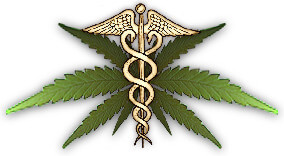
Mile High Potential
If pharmaceutical companies discovered marijuana today, they would hail it as a major breakthrough like Bristol Myer’s discovery of the cancer drug Taxol, derived from tree bark.
As a therapeutic drug, marijuana treats a wide range of conditions with minimal or no side effects. As a low-cost plant-based compound, marijuana drives better outcomes than more expensive chemically-manufactured pain killers.
Marijuana has the potential to disrupt opioid manufacturers. It is no surprise, therefore, that opposing forces are fighting back and have been for some time. The producer of Fentanyl, for example, has fought laws legalizing medical marijuana in Arizona.[21] It’s easy to see why. Medical marijuana is a low-cost and very threatening competitor.
The status quo cannot hold. The appalling social, human and economic costs associated with opioids necessitate comprehensive research into medicinal marijuana’s benefits and risks. Its potential to provide chronic pain relief and treat multiple other conditions with little risk is too promising to ignore.
Fortunately, medical marijuana has widespread public support. As Bob Dylan sang, “It doesn’t take a weather vane to see which way the wind blows.” The nation is well on its way to legalizing medical marijuana throughout the entire country.
Like other consensus social movements (i.e. gay marriage) that overcame entrenched political beliefs, the body politic will overwhelm institutional interests opposing medical marijuana. Paraphrasing Dylan, “It’s time [for them] to get out of the way if they can’t lend a hand.”
This bring us back to the NFL. After fighting the medical evidence that concussions caused severe brain damage, the League pivoted and now leads efforts to diagnose, treat and prevent concussions. Brave players taking a stand catalyzed this change and the country is better for it.
The NFL is waiting for the medical establishment to conduct medical marijuana research and approve its use. It’s time for the NFL to play offense. Rather than sit on the sidelines, the league could fund research and promote the appropriate use of medical marijuana. The country and its people will be better for it.
Supporting medical marijuana research would be a smart political and policy strategy for the NFL. It would address player health concerns, appeal to a younger demographic and place the league on the right side of history.
Colorado was the first state to legalize recreational marijuana. An analysis by the Marijuana Policy Group found the marijuana industry created over 18,000 new jobs in Colorado and contributed $2.4 billion to the state’s economy.
Ironically, the naming rights for the NFL’s Denver Broncos “Mile High” Stadium are up for bid. Among the interested parties are two of Colorado’s largest marijuana distributors.[22] This is harmonic convergence of the highest order. Somewhere in America, Eugene Monroe, Eben Britten dozens of other NFL veterans are smiling.
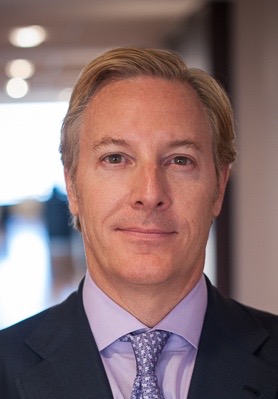 Rick Kimball is a Partner of The Costera Group, an investment company. Having spent 30 years at Goldman Sachs, Morgan Stanley and Millennium Technology Ventures, Rick is now focusing on investing in and building businesses in disruptive new markets. Rick is an Honorary Trustee of the Brookings Institution and was recently a Fellow in Stanford’s Distinguished Careers Institute. Rick writes a blog on disruption in healthcare. www.
Rick Kimball is a Partner of The Costera Group, an investment company. Having spent 30 years at Goldman Sachs, Morgan Stanley and Millennium Technology Ventures, Rick is now focusing on investing in and building businesses in disruptive new markets. Rick is an Honorary Trustee of the Brookings Institution and was recently a Fellow in Stanford’s Distinguished Careers Institute. Rick writes a blog on disruption in healthcare. www.
[1] http://www.nbcnews.com/health/health-news/78-people-die-day-opioid-overdose-surgeon-general-says-landmark-n685366
[2] http://www.vox.com/science-and-health/2016/12/20/14005776/deaths-pain-drug-opioids-fentanyl-chart
[3] http://www.cnn.com/2016/05/10/health/fentanyl-new-heroin-deadlier/
[4] http://www.wbur.org/hereandnow/2016/10/19/carfentanil-opioid-epidemic
[5] http://www.wvgazettemail.com/news-health/20161217/drug-firms-poured-780m-painkillers-into-wv-amid-rise-of-overdoses
[6] https://addiction.surgeongeneral.gov
[7] https://www.cdc.gov/nchs/data/databriefs/db190.htm
[8] https://www.cdc.gov/mmwr/volumes/65/wr/mm655051e1.htm?s_cid=mm655051e1_w
[9] http://www.vox.com/2016/2/12/10979326/elizabeth-warren-marijuana-opioids
[10] http://www.latimes.com/projects/oxycontin-part1/
[11] https://addiction.surgeongeneral.gov
[12] http://www.nytimes.com/2007/05/10/business/11drug-web.html
[13] https://www.justice.gov/usao-ma/pr/pharmaceutical-executives-charged-racketeering-scheme
[14] http://www.nytimes.com/2007/03/01/opinion/01iht-edgrinspoon.4764827.html
[15] http://www.fool.com/investing/general/2015/10/18/is-marijuana-the-new-organ-transplant-wonder-drug.aspx
[16] http://www.newsweek.com/2015/07/31/keep-toke-alive-356032.html
[17] http://thebiglead.com/2016/11/29/buffalo-bills-seantrel-henderson-suspension-crohns-disease-medication-marijuana/
[18] http://jamanetwork.com/journals/jama/fullarticle/2338251
[19] http://www.npr.org/sections/health-shots/2016/07/06/484977159/after-medical-marijuana-legalized-medicare-prescriptions-drop-for-many-drugs
[20] http://newyork.cbslocal.com/2016/04/20/marijuana-legalization-poll/
[21] https://www.leafly.com/news/politics/fentanyl-maker-insys-give-500k-defeat-legalization [22] http://www.cbssports.com/nfl/news/another-denver-marijuana-company-wants-naming-rights-to-the-broncos-stadium/





